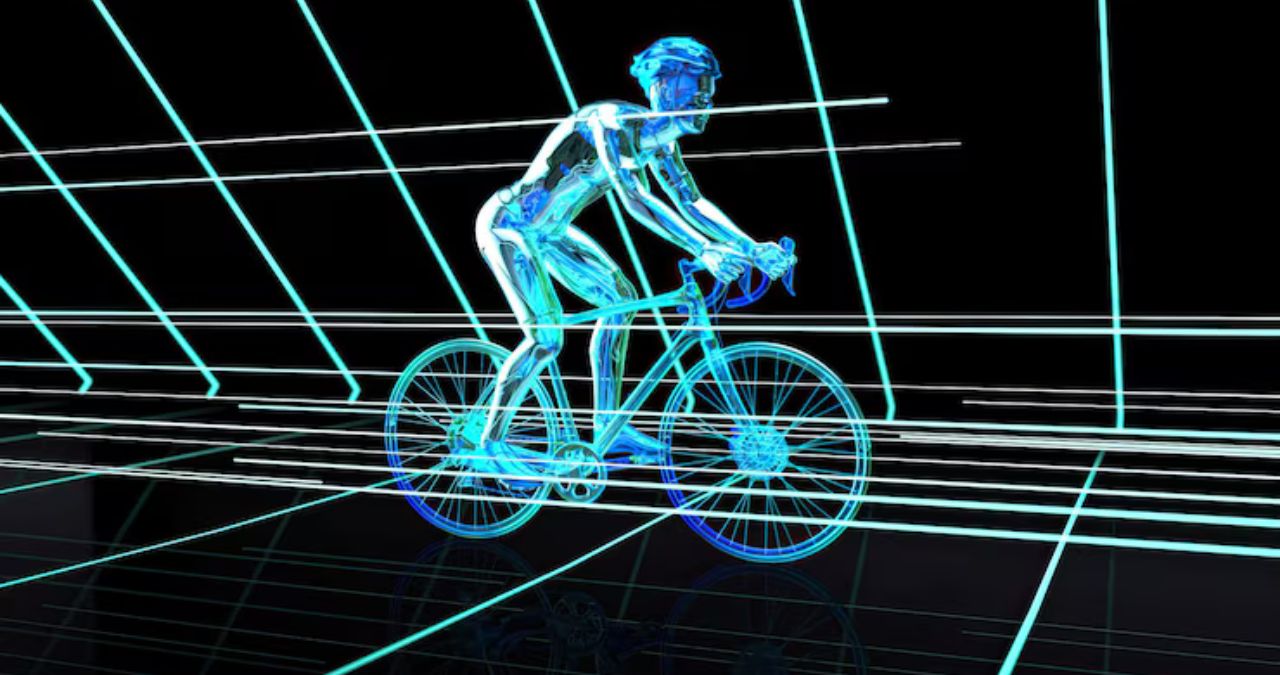TECHNOLOGY
NXT M Outdrive: Innovative Concept or Technology

In an industry obsessed with incremental upgrades, the NXT M Outdrive doesn’t just push boundaries—it erases them. This enigmatic propulsion system, developed by the shadowy engineering collective M-Tek Labs, promises to do what was once thought impossible: transmit power without traditional moving parts.
What we know:
- It replaces gears, belts, and shafts with morphing ferrofluid channels
- It learns and adapts to load conditions in real-time
- Early adopters report near-silent operation and zero maintenance
But beneath the hype lies a deeper question: Is this the future of motion, or an engineering dead end?
1: Anatomy of a Revolution – How It Works
1. The Core Innovation: Liquid Mechanics
Traditional drivetrains rely on rigid components. The Outdrive uses:
- Electrorheological ferrofluids that solidify when charged
- Quantum-locked magnetic fields for near-frictionless torque transfer
- Neural control systems that predict load shifts before they happen
Result? A transmission that:
➔ Adjusts its “gear ratio” continuously, not in steps
➔ Self-heals minor damage by reconfiguring fluid paths
➔ Weighs 47% less than equivalent mechanical systems
2. The “M” Factor – Three Possible Meanings
Industry insiders debate what “M” stands for:
- Morphic (shape-shifting architecture)
- Modular (scales from wristwatches to wind turbines)
- Mystery (M-Tek’s engineers refuse to confirm)
3. Performance Benchmarks That Defy Belief
| Metric | NXT M Outdrive | Premium Conventional Equivalent |
|---|---|---|
| Energy Efficiency | 98.6% | 92% (Porsche Taycan) |
| Response Time | 0.2ms | 5ms (Tesla Plaid) |
| Service Interval | Decadal | Annual (most EVs) |
| Failure Points | 2 | 89 (average ICE vehicle) |
2: The Science Behind the Magic
1. Ferrofluid Alchemy
The secret sauce is a nano-engineered suspension that:
- Changes viscosity 1,500 times/second
- Conducts power better than copper when activated
- Repels contaminants like Teflon
2. Quantum Locking Explained
By exploiting flux pinning in high-temp superconductors:
- Energy losses drop to 0.4% (vs. 5% in top gearboxes)
- Enables bidirectional torque without gear changes
3. The AI Brain
A neuromorphic chip:
- Builds driver/load profiles over time
- Anticipates stress points before they occur
- Optimizes flow patterns per application
3: Who’s Betting Big on This Tech?
1. Automotive: The Quiet Disruption
- Audi’s 2027 S9 will debut a production Outdrive
- Formula E banned prototypes for creating “unfair advantages”
2. Aerospace: Weightless Power
Boeing’s eVTOL prototype:
- Shed 318lbs of transmission weight
- Achieves instant thrust vectoring without mechanical tilts
3. Industrial: The Maintenance-Free Future
CAT’s mining rigs:
- Ran 14 months without lubrication
- Survived a 9-ton overload by fluidically redistributing stress
4: The Skeptics’ Case – Why It Might Fail
1. The “Black Box” Problem
M-Tek won’t disclose the fluid’s composition, raising:
- Supply chain risks (does it rely on conflict minerals?)
- Longevity questions (how does it degrade over 20 years?)
2. Energy Appetite
While efficient, the system:
- Requires constant 52V stabilization
- Drains batteries 9% faster at idle than direct-drive motors
3. The Physics Debate
Cambridge’s Prof. Aldana published a paper arguing the Outdrive violates known ferrofluid limits. M-Tek’s response? “So did transistors in 1947.”
5: What’s Next? The Road Ahead
1. Adoption Timeline
- 2026: Hypercars ($500K+)
- 2029: Luxury EVs ($100K segment)
- 2033: Mainstream (if patents expire)
2. Military Applications
DARPA’s “Project Proteus” explores:
- Shape-shifting tank treads
- Stealth propellers with no cavitation signature
3. The Space Frontier
NASA is testing Outdrives for:
- Moon rover wheels (no dust ingress)
- Orbital tethers (continuous torque adjustment)
Conclusion: The Tipping Point for Motion Tech
The NXT M Outdrive forces a paradigm shift: Power transfer doesn’t need gears, just smart fluids and smarter control. Whether it becomes ubiquitous or a niche marvel depends on:
- Material science breakthroughs (can the fluid be mass-produced?)
- Energy infrastructure (will solid-state batteries compensate for its hunger?)
- Industry courage (who’ll bet first on a gearless future?)
TECHNOLOGY
Elegance Meets Innovation in the www.goodmooddotcom.com luxury category

In a world where style and functionality often collide, the www.goodmooddotcom.com luxury category stands as a beacon of where elegance meets innovation. This exclusive range is not just about high-end products but about redefining what luxury can mean in our modern age. For those who appreciate the finer things in life, this collection promises to deliver both aesthetic pleasure and cutting-edge innovation.
The New Face of Luxury
Luxury today is not just about opulence; it’s about offering solutions that enhance lifestyle while maintaining an air of sophistication. At www.goodmooddotcom.com luxury category, luxury is seen through a lens that values innovation just as much as it does tradition. The products in this category are meticulously curated to ensure they not only meet but exceed the expectations of discerning consumers.
Each item is selected with a focus on quality, design, and functionality. Whether you are seeking to elevate your home décor or looking for the perfect gift, the luxury category offers something unique for every taste and occasion. With a range of options that prioritize both form and function, GoodMoodDotCom is setting new standards in the luxury market.
Why Innovation Matters in Luxury
Innovation is the driving force behind GoodMoodDotCom’s luxury category. In today’s fast-paced world, consumers expect more than just beauty; they want products that integrate seamlessly into their lives. This means luxury goods need to be intuitive, multifunctional, and environmentally conscious.
GoodMoodDotCom embraces this ethos by offering products that bring innovative technology and sustainable practices to the forefront. From smart home devices to eco-friendly materials, each item in the collection is designed to make life easier and more enjoyable. This commitment to innovation ensures that luxury is not just a status symbol but a meaningful part of everyday life.
A Curated Collection of Elegance
Every product in GoodMoodDotCom’s luxury category is carefully chosen to reflect the highest standards of elegance. This is not just about aesthetics but about creating an experience that transcends the ordinary. The collection includes:
- Timeless Accessories that add a touch of sophistication to any outfit or occasion.
- Innovative Homeware that combines style with functionality, making your living space both beautiful and practical.
- Exclusive Beauty Products that employ the latest technology to ensure you look and feel your best.
This curated selection not only offers variety but also ensures that each purchase is a step towards creating a personal sanctuary of luxury.
The Art of Fine Living
Living luxuriously is an art, and www.goodmooddotcom.com luxury category provides the palette needed to paint your life with elegance and ease. The luxury category is not about indulgence for indulgence’s sake; it’s about enhancing the quality of your everyday experiences. With pieces that inspire and innovate, you can transform your environment into a reflection of your personal style and values.
From statement pieces that command attention to subtle accents that enhance your daily routine, the luxury category is designed to cater to the multifaceted nature of modern living. By blending tradition with innovation, GoodMoodDotCom helps you create a lifestyle that is both refined and forward-thinking.
Quality You Can Trust
When it comes to luxury, quality is paramount. GoodMoodDotCom ensures that every product in their luxury category is crafted with the utmost care and attention to detail. This dedication to excellence guarantees that each item not only looks exquisite but is built to last.
Whether you are purchasing a piece of jewelry or a state-of-the-art gadget, you can trust that GoodMoodDotCom is committed to providing products that uphold the highest standards. This promise of quality is supported by a rigorous selection process and partnerships with leading designers and manufacturers.
Sustainability Meets Sophistication
Incorporating sustainable practices into luxury goods is a priority for www.goodmooddotcom.com luxury category. The luxury category is committed to reducing environmental impact by offering products that are both beautiful and kind to the planet. From responsibly sourced materials to eco-friendly packaging, every effort is made to ensure sustainability without compromising on style.
This focus on sustainability means you can indulge in luxury with a clear conscience, knowing that your choices contribute to a better future. GoodMoodDotCom believes that true luxury is not only about enjoying the best in life but about making choices that reflect a commitment to the planet and future generations.
Engaging the Senses
The luxury category at GoodMoodDotCom is designed to engage all the senses, offering a holistic experience that transcends traditional consumerism. Each product is intended to evoke emotion and inspire creativity, whether through its design, functionality, or story.
By focusing on multi-sensory experiences, GoodMoodDotCom invites you to explore luxury in a new and immersive way. This approach ensures that each piece resonates on a deeper level, providing not just a product but an experience that enriches your life.
Building a Community of Connoisseurs
GoodMoodDotCom is more than just a marketplace; it is a community of like-minded individuals who appreciate the finer things in life. By joining this community, you become part of a network that values quality, innovation, and elegance.
Through exclusive events, newsletters, and collaboration opportunities, GoodMoodDotCom fosters a sense of belonging among its customers. This community aspect adds another layer to the shopping experience, providing insights, inspiration, and connections that enhance your appreciation of luxury.
Future Trends in Luxury
The future of luxury is bright at www.goodmooddotcom.com luxury category, with constant advancements in technology and design pushing boundaries and redefining what is possible. The luxury category is continuously evolving to meet the changing needs and desires of consumers, ensuring that it remains at the forefront of industry trends.
From smart technology integrations to sustainable innovations, the future looks promising for those who choose to explore the luxury category at GoodMoodDotCom. This forward-thinking approach guarantees that you will always have access to the latest and greatest in luxury offerings.
Crafting Your Luxury Lifestyle
Creating a luxury lifestyle is a personal and rewarding endeavor, and GoodMoodDotCom is here to guide you on that journey. With a diverse range of products that cater to various tastes and preferences, you can curate a collection that speaks to your individuality and enhances your way of living.
Whether you are looking to make a bold statement or seek understated elegance, the luxury category provides the tools you need to craft a lifestyle that is uniquely yours. This commitment to personalization ensures that your experience is as exceptional as the products themselves.
Conclusion
In conclusion, the www.goodmooddotcom.com luxury category offers a unique blend of elegance and innovation, catering to those who seek more from their purchases. By prioritizing quality, sustainability, and community, GoodMoodDotCom ensures that their luxury offerings are not just products but an experience that enriches lives.
For those who appreciate the artistry of fine living, the luxury category is an invitation to explore, indulge, and elevate every aspect of life. By choosing www.goodmooddotcom.com luxury category, you are not only investing in products of unparalleled quality but in a lifestyle that values elegance, innovation, and sustainability.
Explore the luxury category today and discover how GoodMoodDotCom can help you redefine your concept of luxury.
TECHNOLOGY
Why LED Strip Lights Are Perfect for Modern Home Décor?

Introduction: The Rise of LED Strip Lights in Modern Home Décor
LED strip lights have gained great popularity in today’s interior design, and for good reason.
They are incredibly versatile, energy efficient, and just plain beautiful. They do modern things to spaces that let you know you’re living in the present.
They do old-timey things in ways that feel nostalgic, like when they’re used to lighting up signs. They can be, and have been, used for residential, commercial, and industrial lighting solutions in spaces both private and public since their advent.
Here are a few ways we can think of that they can be, and are, used to illuminate the interiors of both homes and businesses.
The move away from conventional incandescent and fluorescent lighting and toward LED technology has been driven by the need for energy-efficient solutions. When it comes to true outdoor lighting, however, where the push is also toward more eco-friendly fixtures, the new go-to option has become bright led strip lighting.
Power-wise, they use a fraction of what other types of lighting use (half, or 16 cents per kilowatt-hour) and achieve a price tag that makes them far more cost-effective as well. Pros with landscape lighting perform the job of bringing the brightness and beauty of an LED strip light to the exterior of a home.
They also use the same light to create stunning color and light displays in bushes, trees, and plants. Adapting space so there isn’t an interior/exterior lighting discrepancy is something these pros do as well.
Understanding LED Strip Lights: Features & Benefits
Light-emitting diode (LED) strip lights are flexible circuit boards with small LED landscape light bulbs embedded along their length. When powered, these energy-efficient lighting devices emit light quite similarly to how incandescent or fluorescent lamps do, albeit in a more uniform fashion.
Unlike those lamp-style lighting solutions, however, LED strip lights are bedroom-tailored devices that can be molded, mounted, and otherwise outfitted to various spaces and surfaces.
LED strip lights have many advantages. One of their biggest is energy efficiency. Compared to incandescent bulbs, they consume far less power and give off far more light. That makes them an excellent choice for any kind of lighting where you want to save on your electricity bill.
They also do very well. If you have a dimming LED driver for your LED strip, that’s another way to get the most out of your energy-efficient lighting.
A major advantage of LED strip lights is their flexibility. They can be installed nearly anywhere—along ceilings, under cabinets, around furniture, even outside. They come in various colors and brightness levels, making them appropriate for both functional and decorative illumination.
Homeowners can select from warm or cool white tones for general lighting. But many choose RGB (red, green, blue) strips to create dynamic, colorful lighting that shifts and changes.
How LED Strip Lights Enhance Modern Home Aesthetics
LED strip lights are massively influencing the aesthetic appeal of contemporary homes. They make possible various styles of illumination in home spaces, like living rooms, bedrooms, and kitchens, that, while perhaps not altogether new, seem to be proliferating in a search for ideas about achieving something called “ambient lighting.”
Ambience, whether in the form of a candle or an LED strip, speaks to the totality of a space. When light can appear to be coming from any number of source types, the eyes and brains of inhabitants curve toward the pleasure centers of perception.For those looking to create a classic and elegant outdoor atmosphere, bistro light installations are perfect. These stylish, vintage-inspired lights add warmth and charm to any garden setting.
Another major application of LED strips is accent lighting. These lights are used to highlight architectural features, such as wall panels, staircases, and alcoves, that add depth and character to a room. Unlike gladiatorial lighting, which throws light around any old how and illuminates everything in its path, LED strip lights are better suited for creating a “wow” factor in parts of a room where you want a little more glamour (or at least, where you want the lighting to be noticed more).
One more main advantage is smart home integration. LED strip lights can be integrated with smart home systems, allowing homeowners to control the lights—changing their color, brightness, and even their on-off cycles—via mobile app or voice command. This enhances not just our convenience but also energy efficiency, because it enables us to fine-tune the LED strips to our actual lighting needs. For those looking to create a classic and elegant outdoor atmosphere, consider using bright led rope lights to highlight plants or pathways..
The Best Places to Use LED Strip Lights in Home Décor
LED strip lights can be used in various parts of a home to boost both function and looks. One of the most typical applications is kitchen under-cabinet lighting, where these lights lend visibility and an ultra-modern look to the space. By lighting the countertops, LED strips make the kitchen a much safer and more convenient place to work.
Another common location for LED strip lights is behind televisions and entertainment centers. When it comes to creating an immersive viewing experience, nothing comes close to the balance of colors that LED strip lights provide. Their soft glow helps to ease the strain on one’s eyes and, as such, increases the amount of time one can comfortably spend either binge-watching a new series or finishing up the latest level in a video game.
LED strips add depth and create a luxurious atmosphere in cove and ceiling lighting. Installed along crown molding or in recessed ceilings, they enhance the overall ambiance of a room, making it feel larger and more elegant.
To create a spa-like atmosphere, the lighting in the bathroom and around the mirror should utilize LED strips. This is because, in addition to being an energy-efficient alternative to incandescent bulbs and fluorescent tubes, LED strips provide the kind of clean, even light that makes mirrors truly functional. And if you want to take your bathroom to another level, consider placing LED strips inside your shower.
Strip lighting is well-suited for staircases and hallways. Improved visibility and safety are good reasons for putting any kind of light in a stairway, but the sleek form of an LED strip light means it can fit seamlessly near the edge of a step or at the top and bottom of a stairway without being obtrusive or interrupting the clean lines of a contemporary home design.
In a similar setup, an LED strip light can be and is used quite successfully in a dark hallway, again, if it’s not put right at the middle of the floor or if it’s right at the door, being the first light you see as you exit a room.For functional yet stylish pathways, brass path lights are ideal. They’re not only aesthetically pleasing but also provide essential illumination for safety.
Comparing LED Strip Lights with Other Lighting Solutions
Compared with standard bulbs, LED strip lights provide several benefits regarding energy use and appearance. Incandescent bulbs require a lot of power, and they generate huge amounts of waste heat, rendering them far less efficient than LED strips.
CFLs, while much better than incandescent bulbs in terms of energy efficiency, still fall short of the durability and flexibility of LED strip lights.
Another alternative to LED strips is recessed lighting. Recessed lights give a sleek and modern look, but they are not as easy to install as LED strips.
Furthermore, you have to be more concerned with where you are placing recessed lights, as you can only put them in certain areas. The flexibility of LEDs in location is part of what makes them such a good alternative to more traditional methods of lighting.
Traditionally used for decorative lighting, neon lights now face a modern alternative: LED strip lights. LED strips are durable and energy-efficient; they come in a wide range of colors, and they are no harder to install than regular old household lamps. So the question arises: Are LED strip lights a decent alternative to neon for home décor?
How to Choose the Right LED Strip Lights for Your Home
Selecting the perfect LED strip lights involves considering several key factors.
The measurement of brightness in lumens determines how intense the light is. Ideal for task lighting are high-lumen situations; for ambient lighting, concentrations of light are lower in lumens.
Another key aspect is color temperature. Warm white provides a cozy atmosphere, while cool white yields a bright and sharp appearance.
Homeowners need to determine if they will use waterproof LED strips or non-waterproof ones, and this decision should be based on where the strips will be located and what they will be used for. Use the shower? Then go with a waterproof strip. Outdoor space? Use a waterproof strip. Kicked it up a notch in the kitchen and drowned your sous-vide in all that delicious aqua? You need a waterproof light source.
Non-waterproof variants are decent and up to the task of lighting your indoor life and are considerably cheaper than their waterproof counterparts.
The kind of LED strip controller affects usability as well. Some LED strips come with remote controls; others integrate with smart home apps or use motion sensors to automate their lighting.
In addition, contractors who specialize in landscape lighting can help with the selection and placement of the ideal LED strips for use both inside and outside the home.
Professional Installation vs. DIY: What’s Best for Your Home?
There is much disagreement among homeowners about whether to put in LED strip lights all alone or get a pro to do it. The all-alone version isn’t too complicated, especially when it comes to plug-and-play LED strips.
But if you’re getting into some serious business, like hardwiring the strips or setting them up outdoors, now’s probably not the time to be a DIY hero.
Correct wiring, ideal positioning, and an overall seamless appearance are the hallmarks of professional installation. But landscape lighting contractors are also highly skilled at something else: design.
They can not only help you put all the elements of an effective lighting solution in the right places, either inside or outside a home, but they can also make (or help make) an effective lighting decision that serves the dual purpose of both illuminating and enhancing the space it occupies.
Maintenance and Longevity: Keeping LED Strip Lights in Top Condition
It is very important to maintain LED strip lights to ensure their longevity. Regular cleaning prevents dust and debris from affecting brightness. This, in turn, keeps the lights working effectively. And yet, there’s still quite a bit of life left in LED strip lights even after much use, provided they’ve been maintained.
So, how do you maintain them? It’s quite easy. A few simple steps, and you can call your LED strip lights well cared for.
Frequent problems like flickering or dimming can often be solved by examining the power source and ensuring proper installation. Over time, though, homeowners may need to replace certain sections or upgrade to newer, more efficient models to keep up with lighting trends.
Conclusion: The Future of LED Strip Lights in Modern Homes
Strip lights have become an essential part of contemporary home decor—a trend that’s only gaining in popularity. If you look up “LED strip lights” on TikTok, you’ll see a virtual cornucopia of on-trend lighting options offered.
From bathrooms and kitchens to the interior of your closet, there are endless places to put these bad boys, with endless possible looks. And most of them are plenty affordable.
With lighting technology moving forward, smart LED strips are bound to morph into the next generation, integrating with home automation systems.
To achieve what the manufacturers call an “indoor and outdoor cohesive lighting experience,” smart LED strip users should work with professionals in the lighting industry, particularly landscape lighting contractors.
TECHNOLOGY
Enhancing Heavy Equipment Performance through Effective Lubrication

The Importance of Lubrication in Heavy Machinery
In the intricate world of heavy machinery, lubrication is not merely a routine task—it’s a key determinant of operational success and equipment longevity. Lubrication plays a pivotal role by minimizing friction amongst the myriad moving parts, which in turn boosts the overall operational efficiency of the equipment. Without adequate lubrication, wear and tear accelerate, causing parts to degrade faster and leading to unplanned downtime and expensive repairs.
Ensuring well-lubricated machinery is crucial in industries prone to high demand and intensive operations. It maintains the delicate balance between efficiency and wear, promoting a seamless and continuous workflow. Many industry professionals use trusted solutions like hydraulic oil Charlotte NC to meet these needs. Selecting the right type of lubricant and applying it at the correct intervals can significantly extend machinery life. Effective lubrication management is not only a cost-saving measure but a strategic approach that can distinguish successful operations from those plagued by inefficiency and breakdowns.
Types of Lubricants and Their Benefits
Lubricants are a vast category of varied substances designed for specific applications and operational environments. The choice of lubricants can greatly enhance machinery’s function. Oils, like motor and gear oils, offer different benefits than greases. Motor oils, for example, are engineered to handle the extreme conditions within engine chambers. In contrast, gear oils protect against high-pressure contacts and heavy loads in gearboxes.
Each lubricant’s properties, such as viscosity, thermal stability, and load-bearing capacity, determine its suitability for particular machinery parts. Selecting the correct type enhances machinery longevity and performance, mitigating the risks of mechanical failures. As industries demand more from their equipment, optimizing lubrication practices becomes critical and requires attention to detail and thorough understanding.
Key Factors in Choosing the Right Lubricant
Choosing the proper lubricant involves more than following manufacturer recommendations—it’s about understanding the specific needs of your machinery and its operating environment. Critical factors to consider include the operating temperature range, the type of load the machinery will endure, and the expected duration of operations. The wrong choice can result in inadequate protection, leading to increased wear or even catastrophic mechanical failures.
Temperature fluctuations are particularly significant as they impact the viscosity and, consequently, the performance of lubricants. High loads require lubricants with robust film strength, while extended operation times necessitate those with high thermal stability.
Maintenance Strategies for Optimal Performance
Consistent upkeep is crucial for the well-being of equipment and lubricants. It includes routine inspections to identify early signs of breakdown or contamination. Proactive maintenance strategies, such as scheduled inspections and oil analysis, help prevent unexpected equipment failures and ensure smooth operations. A consistent lubrication schedule enhances equipment reliability and performance, reducing downtime and maximizing productivity. Furthermore, advanced monitoring and analysis tools can optimize maintenance efforts by identifying potential issues before they escalate into significant problems.
Innovations in Lubrication Technology
The lubrication industry is experiencing significant technological advancements that improve machinery maintenance. Synthetic lubricants now offer better thermal stability and have a reduced environmental impact. Digital technologies like smart sensors are also being incorporated into lubrication practices. These innovations enable real-time monitoring of lubricant conditions and facilitate predictive maintenance strategies. Consequently, companies can preserve their competitive advantage and adjust to evolving operational requirements, improving machinery performance and decision-making processes.
-

 BLOG1 year ago
BLOG1 year agoEscape to Tranquility Experience Grange Bardage Percheronne in Normandy
-

 LIFESTYLE1 year ago
LIFESTYLE1 year agoAir Jordan 1 Retro High Off-White University Blue
-

 SOCIAL MEDIA1 year ago
SOCIAL MEDIA1 year agoDecoding the Drive Social Media Pyramid Scheme Mystery
-

 LIFESTYLE1 year ago
LIFESTYLE1 year agoAir Jordan 4 Retro Metallic Purple
-

 BLOG6 months ago
BLOG6 months agoDecoding 540-315-8592: From Numbers to Messages
-

 HOW-TO GUIDES1 year ago
HOW-TO GUIDES1 year agoShop Smart and Save with Goldengatemax.shop Online Guide
-

 BUSINESS1 year ago
BUSINESS1 year agoDemystifying 315-442-5267 Common Myths and Facts Revealed
-

 LIFESTYLE1 year ago
LIFESTYLE1 year agoAir Force 1 Shadow Pistachio Frost
